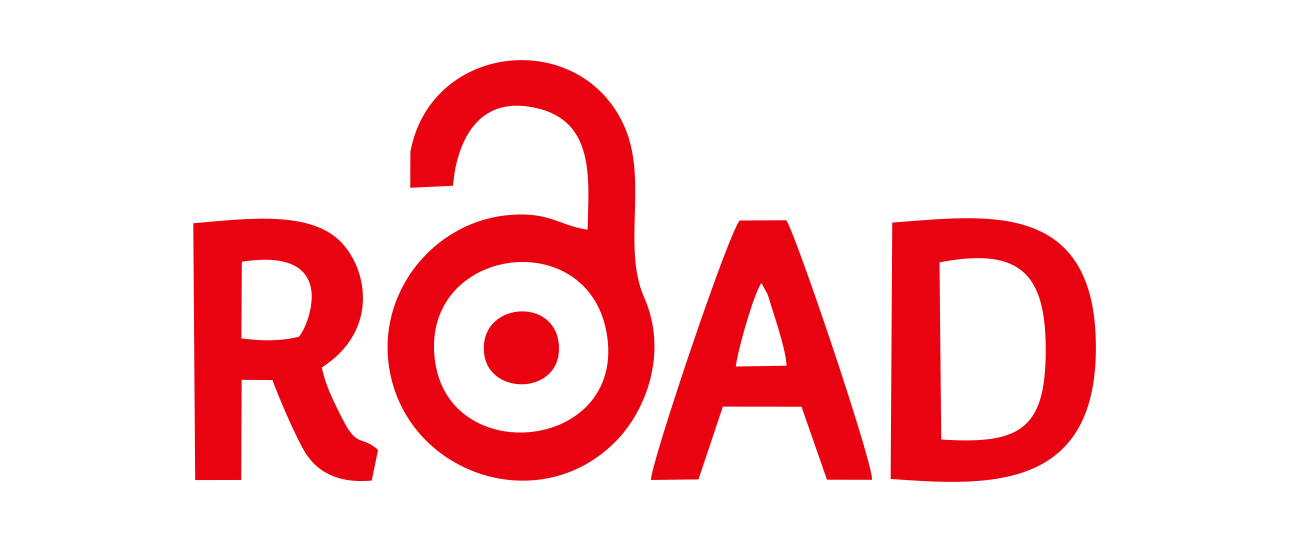Change of Color and Growth of Koi Fish (Cyprinus rubrofuscus) with Addition of Seaweed Extract (Kappaphycus alvarezii) on Feeds
(1) Study Program of Agricultural Technology Education, Faculty of Engineering
(2) Study Program of Agricultural Technology Education, Faculty of Engineering
(3) Study Program of Agricultural Technology Education, Faculty of Engineering
(*) Corresponding Author
DOI: https://doi.org/10.26858/jai.v1i2.56692
Abstract
Seaweed is a marine plant belonging to the benthic macroalgae which lives a lot attached to the bottom of the waters. Seaweed has three main types of pigments, namely chlorophyll, carotenoids, and phycobiliproteins. The content of carotenoids is one of the most important groups of natural pigments which functions to pigment skin color (scales). Carotenoids also affect fish growth, with the availability of carotenoids in the fish's body, raw materials are available to be synthesized into important compounds needed by fish. This study aimed to analyze the effect of adding seaweed extract to feed on the brightness and growth of koi fish. This study is an experimental study using a completely randomized experimental design (CRD) consisting of 4 treatments with 3 repetitions. The treatments consisted of treatment K (100% commercial feed), A (7% seaweed extract, 93% commercial feed), B (5% seaweed extract, 95% commercial feed), C (3% seaweed extract, 97% commercial feed). Each treatment was observed on color brightness and growth (absolute weight, SGR), feed utilization (FCR and EPP), water quality, temperature, pH, and ammonia. The data was processed using SPSS version 24 program with Tukey HSD analysis. The results of this study showed that the administration of seaweed extract with different concentrations affected the color brightness and growth of koi fish (Cyprinus rubrofuscus). Where treatment A was the best treatment for color brightness 13.87, and treatment C was the best treatment for growth with absolute weight growth of 2.5 grams, SR 90%, FCR 1.7%, EPP 58%.
Full Text:
PDFReferences
Aditya, B. P., Sunaryo, S., & Djunaedi, A. (2012). Feeding different size pellets to the growth of mangrove crabs (Scylla serrata Forsskål, 1775). Journal of Marine Research, 1(1), 146-152.
Amarwati, H. (2015). Utilization of Fermented Cassava (Manihot Utilissima) Leaves in Artificial Feed on the Growth of Red Tilapia (Oreochromis Niloticus). Journal of aquaculture management and technology, 4(2), 51-59.
Antono. (2010). Changes in Color of Maskoki Fish (Carrius auratus) fed with Carotenoids with Different Duration of Feeding. Bogor.
Bachtiar, Y, & Lentera Team. (2002). Enhancing the Color of Koi Fish. Agromedia Pustaka. Jakarta gromedia Pustaka. Bogor, pp. 72.
Burhani, R., Diniarti, N., & Lestari, D. P. (2022). Effect of Addition of Eucheuma Cottonii Seaweed Flour in Feed on Growth and Survival of Tilapia (Oreochromis Niloticus). Journal of Fish Nutrition, 2(1), 1-12.
D'Alessandro, E. B., & Antoniosi Filho, N. R. (2016). Concepts and studies on lipids and pigments of microalgae; A review. Renowable and Sustainable Energy Reviews, 58(12), 832-841.
Dani N., Budiharjo A., & Listyawati S,. (2005). Composition of Artificial Feed to Increase Growth and Protein Content of Tawes (Puntius javanicus Blkar). Research. Sebelas Maret University (UNS) Surakarta. Page 83-90.
Dwiyitno. (2011). Seaweed as a Potential Food Fiber Source. Squalen Balai Besar Riset Pengolahan Produk dan Biotechnologi Kelautan dan Perikanan. 6(1): 17 - 19
Endraswari LPMD, Cokrowati N, Lumbessiy SY. (2021). Fortification of fish feed with Gracilaria Sp. seaweed meal in tilapia (Oreochromis niloticus) cultivation. Marine Journal. Vol. 14 No.1
Effendie, M,I. (2003). Fisheries Biology. Nusantara Library Foundation Publisher. Yogyakarta.
Ekawati, S. R. (2008). Improvement of Survival and Growth of Mangrove Crab Scylla olivacea Stadia Zoea through the Application of Natural Feed from Bioencapsulated Carotenoids of Non-Economic Crab Shells. Thesis. Graduate Program of Fisheries Science. Hasanuddin University. Makassar. 106 pp.
Haerudin, A., Pujilestari, T., & Atika, V. (2017). Effect of Solvent Type on Extraction Results of GracilariaSp. Seaweed as a Natural Color Substance in Cotton and Silk Batik Fabrics. Dynamics of Crafts and Batik, 34(2), 83-92
Hanief, M. A. R., Subandiyono & Pinandoyo. (2014). Effect of feeding frequency on growth and survival of tawes (Puntius javanicus) fry. Journal of Aquaculture Management and Technology.3(4): 67-74.
Hidayat, K., Usman, M.T., & Mulyadi. (2012). Enlargement of Selais (Ompok hypopthalmus) with fish meal Containing Thyroxine (T4) Hormone. Faculty of Fisheries and Marine Science. Riau University.
Irmadiati, I., Lumbessy, S. Y., & Azhar, F. (2021). Effect of Addition of Eucheuma spinosum Seaweed Flour in Feed on Growth and Survival of Goldfish (Cyprinus carpio). Acta Aquatica: Aquatic Sciences Journal, 8(3), 146-153.
Iskandar, R., & Elrifadah, E. (2015). Growth and feed efficiency of tilapia (Oreochromis niloticus) fed with kiambang-based artificial feed. Ziraa'ah Agricultural Scientific Magazine, 40(1), 18-24.
Islamiyah, D., Rachmawati, D., & Susilowati, T. (2017). Effect of honey addition in artificial feed with different doses on relative growth rate performance, feed utilization efficiency and survival of milkfish (Chanos chanos). Journal of Aquaculture Management and Technology, 6(4), 67-76.
Kalidupa, N., Kurnia, A., & Nur, I. (2018). Study of Utilization of Red Dragon Fruit Peel Flour (Hylocereus polyrhizus) in Feed towards the Coloration of Koi Carp (Cyprinus carpio L.). Aquatic Media, 3(1), 590-597.
Lesmana, D. S. (2001). Water quality for freshwater ornamental fish. Penebar Swadaya, Jakarta. 88 pp.
Lestari, S. F., Yuniarti, S., & Abidin, Z. (2013). Effect of feed formulation made from fishmeal, cornmeal, fine bran and tofu pulp on the growth of Tilapia (Oreochromis sp). Journal of Marine Science: Indonesian Journal of Marine Science and Technology, 6(1), 36-46.
Maolana V, Sri Oetami Madyowati, Nurul Hayati. (2017). The Effect of Carrot Juice (Daucus Carota L) Addition in Feed on Color Improvement in Koi Fish Enlargement (cyprinus carpio koi). Gandusari Village, Gandusari Subdistrict, Blitar Regency.
Maulid, M.A. (2011). Addition of Total Carotenoids from Anoxygenic Photosynthetic Bacteria in Feed to Improve the Appearance of Male Rainbow Meran (Glossolepis insicus). Thesis, University of Padjajaran
Maolana V, Sri Oetami Madyowati, Nurul Hayati. (2017). The Effect of Carrot Juice (Daucus Carota L) Addition in Feed on Color Improvement in Koi Fish Enlargement (cyprinus carpio koi). Gandusari Village, Gandusari Subdistrict, Blitar Regency.
Nasir, A., Tuwo, A., Lukman, M., & Usman, H. (2015). Impact of increased Nutrient on the Variability of Chlorophyll-a in the West Coast of South Sulawesi, Indonesia, 6(5), 821-826.
Sulawesty F., Tjandra Chrismadha, & Endang Mulyana, (2014). Growth Rate of Goldfish (Cyprinus Carpio L) with Fresh Lemna (Lemna PerpusillaTorr.) Feeding in Closed Flow System Pond. Limnotek Journal.21(2): 177 pp.
Vardian, A, K., Subandiyono., Pinandoyo. (2013). Effect of Different Strains of Tilapia F5 (Larasati, Red, Black) Fed with E/P Value of 10.96 Kcal/G Protein on Growth and Survival. Journal of Aquaculture Management And Technology, 2(4):108-114.
Wayan, S., (2010). Color enhancement of red rainbow trout (Glossolepis incisus) through caratenoid enrichment of shrimp head meal in feed. Indonesian Journal of Ichthyology. 10(1), 1-9.
Yanti, Z., Z.A. Muchlisin, Sugito. (2013). Growth and survival of tilapia (Oreochromis niloticus) fry at several concentrations of jaloh leaf meal (Salix tetrasperma Roxb) in feed. Depik. 2(1):16-19
Article Metrics
Abstract view : 107 times | PDF view : 12 timesRefbacks
- There are currently no refbacks.
Copyright (c) 2023 Author(s)

This work is licensed under a Creative Commons Attribution 4.0 International License.
Publisher Address :
Agricultural Technology Education Study Program, Faculty of Engineering, Universitas Negeri Makassar
Kampus UNM Parang Tambung, Jalan Daeng Tata Raya, Makassar, South Sulawesi, Indonesia 90224
Email: j.agroscience@gmail.com
Website: https://ojs.unm.ac.id/journalagroscience
Journal of Agroscience Indonesia Indexed by:
This journal is published under the terms of Creative Commons Attribution 4.0 International License.






